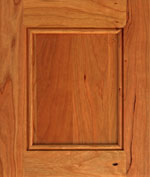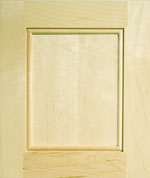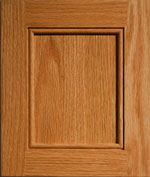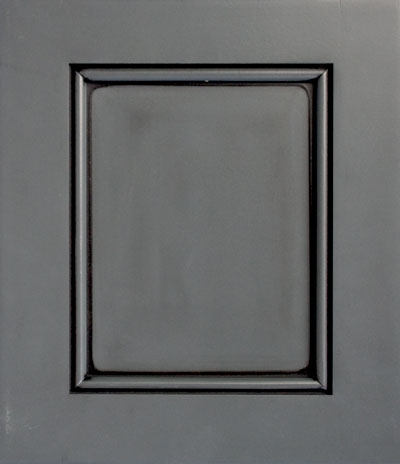The Beauty of Wood
Variation in grain and color creates the beauty of real hardwood. Quality wood finishes highlight the
unusual graining and color patterns. After hardwoods are finished they are affected by exposure to sunlight
and the elements. That’s why new cabinets will never be the same color as an aged sample or bathroom
display. Some people find natural variety distasteful, but most welcome it as the reason they chose real
wood instead of an imitation wood grain or plastic.
Light stains show the color variations most clearly—but the color will change. Wood “mellows” as it ages,
often darkening significantly as it expands and contracts over the course of a year. Some species of wood
darken more than others. Opaque (or painted) finishes keep their color, but hairline cracks appear at the
joints of the cabinet frame, doors and drawer fronts. When the wood contracts, the seams become more
visible, gaining a distinctive characteristic of antique painted cabinetry. Despite the hairline cracks, the
joint itself remains strong and solid.

Cherry Natural wood color
|
|
Cherry
Cherry is an old favorite that finishes to a glass-like finish with textured accents provided by small knots, irregular black streaks or pits. The Natural finish and Golden stain show off this variation, including natural dark streaks more than four inches long. The white, cream, pink, mahogany and reddish brown colors tend to become richer and deeper with age. Sable, Walnut and Medium stains will moderate some of this natural change, but sharp eyes will still see the wood age. Espresso stains completely masks the color change, but the dark surface highlights the texture of Cherry's gum lines and pits, which once carried nutrients throughout the tree. The surface texturing can be more than a quarter of an inch wide and run the entire length of a piece of wood. |

Maple Natural wood color
|
|
Maple
Maple possesses warm color and a strong closed grain, which may display vine marks and "bird's eye". Occasionally, a wave-like grain called "flame" maple graces a cabinet: it is prized by makers of guitars and violins for its strength. Dark streaks of black and burnt umber complement the creams, tans and rich browns of the long-time favorite. Lighter finishes show off the contrasting colors and grain characteristics, while darker finishes provide a mellow, traditional finish. Paint disguises the color, but certain grain characteristics add texture to the sheen. As with all paints, cracks will appear at joints of the doors, drawers and cabinet frame as the wood expands and contracts throughout the year. |

Oak Natural wood color
|
|
Oak
Red Oak creates fine American furniture that adds quiet strength to your home. Smooth, luminous rays run throughout the wood and complement the open grain, providing abundantly textured cabinetry in shades of pink, tan, and white, with touches of green, brown and black. Natural finish and Golden stain highlight the red and pink tones in the wood, while darker stains transform Oak into warm shades of brown. Paint disguises the color, but highlights the open grain - especially when the discerning owner chooses a Glaze combination. As with all paints, cracks will appear at joints of the doors, drawers and cabinet frame as the wood expands and contracts throughout the year. |

Glaze Finish
|
|
Glaze Finish
Glaze is applied and wiped by hand creating a "build up" in corners and profiles. Glaze is an artistic application and is intended to be random and unique for each application.
There are "No Returns" on glaze finishes for variations in the glaze--difference in color tone nor the amount of glaze build up in cracks and corners. |







